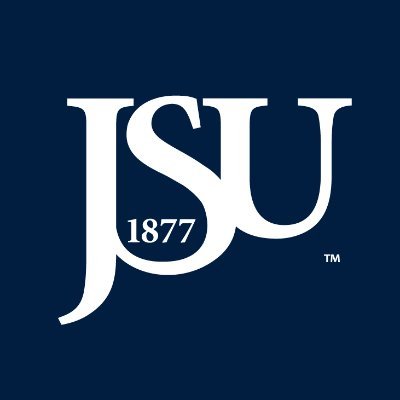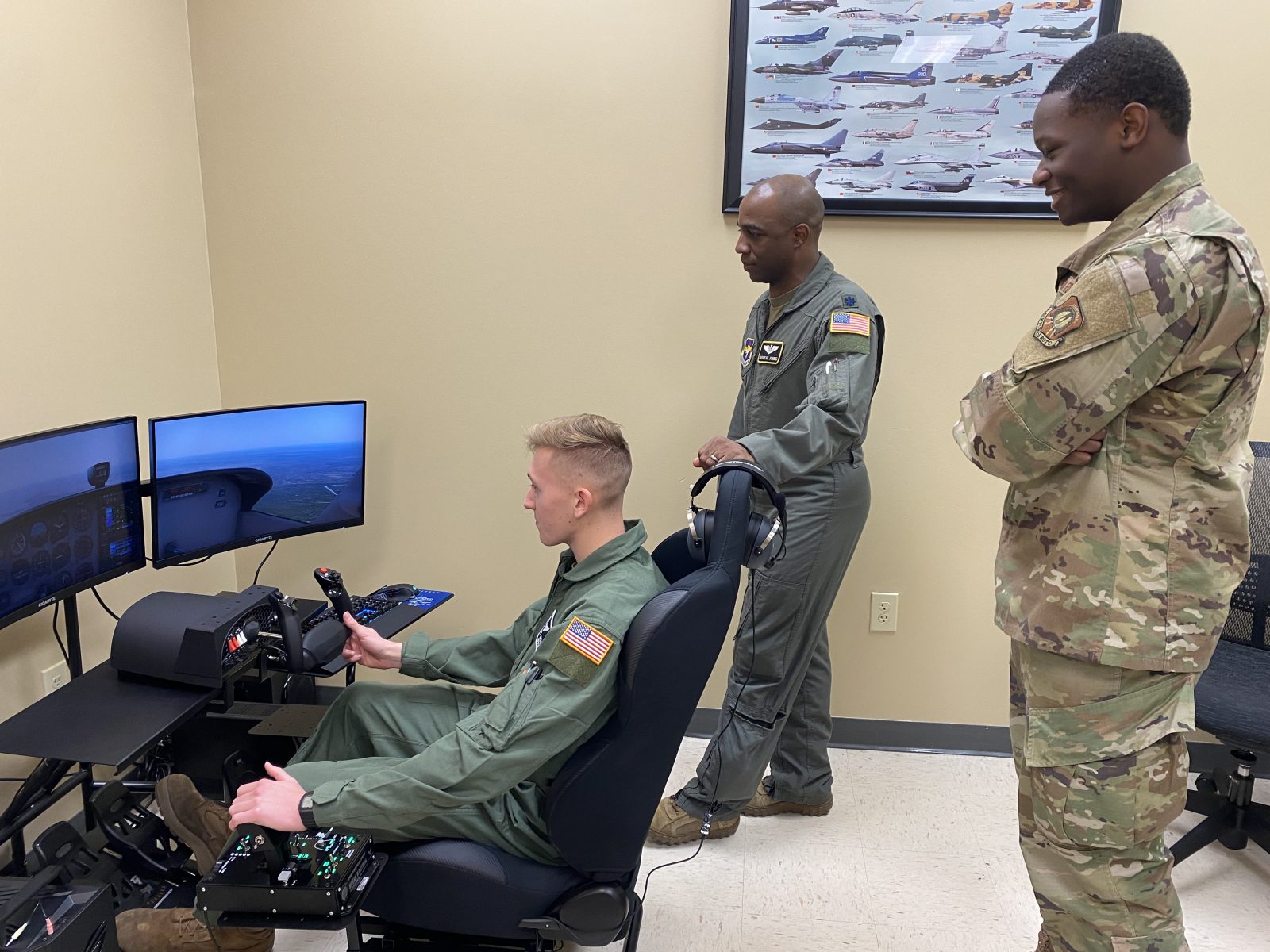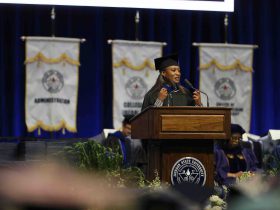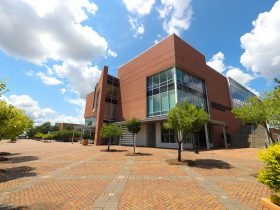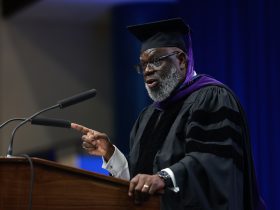![]()
(JACKSON, Miss.) – Jackson State University recently introduced a new Air Force flight simulator program that engages and equips cadets with the technical aspects and hands-on training necessary for piloting a commercial or military-grade aircraft.
The program is designed to provide additional hours of training for cadets interested in becoming a pilot. Cadets on the fence about becoming a pilot can learn more about the career pathway through introductory training and exposure.
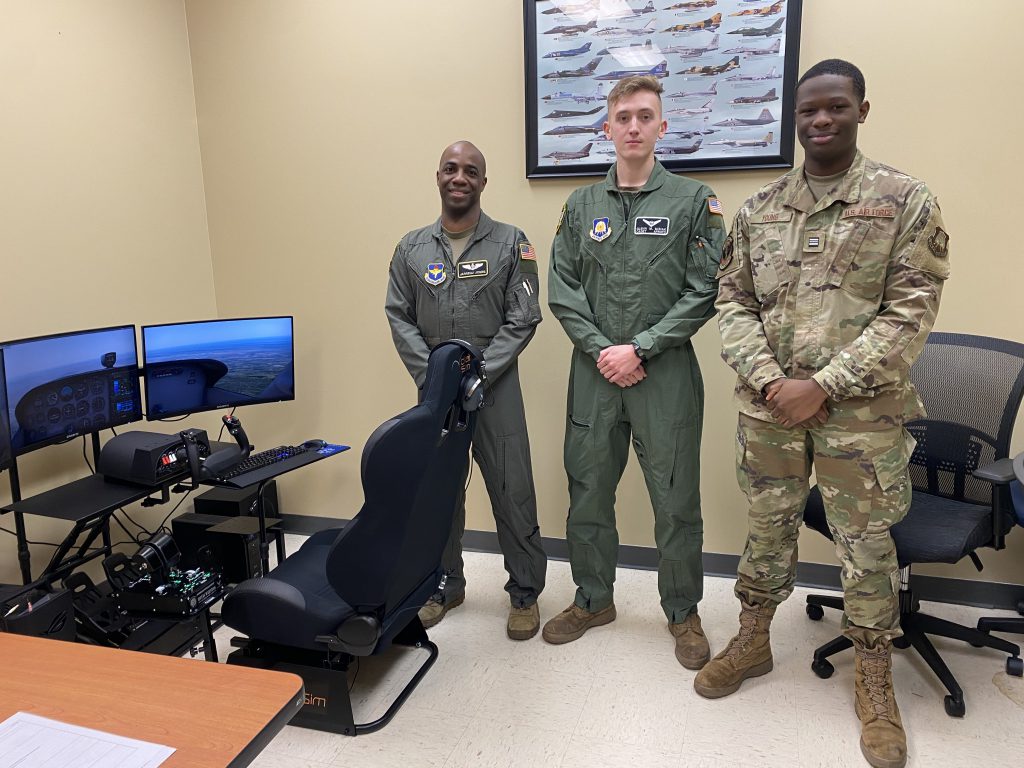
“If you look at the demographics for the Air Force, we have about 14,000 active duty pilots right now. Less than 300 are African American, so less than 2% of the Air Force active duty force is African-Americans operating aircraft,” said Lieutenant Colonel Natosha Reed, JSU Air Force ROTC commander. ” I believe that the main reason is lack of exposure to our population versus those who’ve been exposed to flight simulators, flying programs, etc since middle and high school. The ultimate goal and value of having a simulator within the detachment is to provide exposure and experience to our cadets, leading to production of more pilots in the Air Force from this detachment.”
For the program, it has been nearly a decade since a cadet from JSU, upon commissioning, entered the Air Force in pursuit of becoming a pilot – the last one being in 2015. The journey toward earning one’s pilot certifications is riddled with countless hours of mastering real-world obstacles, protocol and procedures while handling an aircraft, as well as the obvious, gaining ‘behind the wheel’ experience in flying.
Exposure and repetition are only two of the essentials necessary for becoming a master pilot. With innovative programming, like the flight simulator, the ROTC program can now position this additional tool to provide cadets with well-rounded training and pre-conditioning their knowledge base before entering flight school.
Lieutenant Colonel Jarreau Jones, operations flight commander and primary advisor for the Flight Simulator program, said he sees limitless potential in bringing the opportunity to JSU, acknowledging the push for diversity within the Air Force.
“I know the cadets’ are going to get a lot of growth out of it. One of the big things that we’re trying to promote is more underserved and underrepresented populations within the Air Force,” said Jones. “Generally speaking, we know being at an HBCU, we have plenty of programs looking at us, and we want to contribute to that, which is also one of the reasons I came here [JSU] to try and share my experience.”
The simulator provides a state-of-art experience similar to professional pilot training, giving students an immersive experience in learning the basic controls of a standard commercial aircraft. With three large monitors providing a 135-degree field of view, cadets can simultaneously apply learned knowledge and receive insights from experienced pilots on how to land the aircraft effectively.
“What we’re doing is maximizing the time and the money spent, which ultimately makes the time that they do spend on the aircraft more beneficial. So it’s a multiplier, and it once again reinforces that confidence of, ‘hey this is actually something I can do,'” said Jones.
Senior computer engineering major, Cadet Glenn Misiak, has cherished his childhood memory of one day flying a military aircraft, following in the footsteps of his parents, who also served in the Air Force. Upon his commissioning later in the Spring, Misiak will become the first cadet since 2015 to become a rated pilot and participate in pilot training.
“I’ve always kind of known that I wanted to do ROTC. Since I was in high school, I’ve always really been interested in flying since I was a kid. I can remember being eight years old and then looking up in the sky, seeing a plane, like yeah, ‘That’s what I want to do,'” said Misiak, a native of Columbus, Mississippi.
Once trained and classified as a certified pilot, an individual undergoes a 10-year contract within the Air Force. Misiak looks forward to cherishing every moment so long as the passion remains intact and unquenched.
“My plan right now is to judge where I am at the moment. As of right now, my full intentions are to go as long as I can within the Air Force,” said Misiak. “As soon as the passion leaves, only then might I get out and try something new.”
Ridgeland, Mississippi, native Cadet Carlton Young also has a long-standing passion for aviation. He recalled childhood memories of riding on planes and drafting his own pilot’s “checklist” before taking off.
“I remember making these elaborate checklists like the pilots would do. I would put food, teddy bears, and toys…” said Young. “I just always knew I wanted to be a pilot before I even knew what it was, so I guess this is my calling and just the right thing to do.”
A sophomore transfer student from Hinds Community College, Young has already completed more than 100+ hours of flight training and continues to build upon his experience. For an individual to receive their pilot license, they must accumulate at least 60 hours of training, for Young prioritizing the journey as opposed to rushing to the finish has aided in development.
“It’s kind of like college, each step, you’re not really looking at the finish line, just wondering what’s next?” said Young. “When I fly, I really don’t think of it as work. This is something that I want to do. So I do not see it as how many hours I have to have, but how much I can fly?”
The program will be available for all cadets within the program as an additional support item for their curriculum and those who may have curiosity about the world of piloting. With this level of exposure and intentionality of programs readily available in underrepresented communities, visions of the future are becoming more colorful and promising, opening windows of opportunity and confidence for JSU students.
###
Media Contact: kyle.d.kidd-buckner@jsums.edu


